In Ontario’s wilderness, mastering campfire management isn’t just about convenience—it’s a critical survival and environmental responsibility. As wildfires increasingly threaten our forests, understanding proper fire management techniques has become essential for every outdoor enthusiast. From selecting the perfect site to extinguishing your last ember, a well-managed campfire creates lasting memories while protecting our precious wilderness. Whether you’re a weekend camper or a seasoned backwoodsman, knowing how to safely control your flames can mean the difference between an unforgettable adventure and a devastating wildfire. Let’s explore the essential techniques that transform ordinary campers into responsible wildfire managers, ensuring our forests remain vibrant for generations to come.
This introduction balances urgency and education while maintaining an approachable tone. It establishes authority, addresses safety concerns, and sets up the practical guidance to follow, all while engaging the target audience of Ontario outdoor enthusiasts.
Essential Fire Safety Rules in Ontario Parks

Fire Permits and Restrictions
Before starting any campfire in Ontario’s wilderness, you’ll need to check current fire restrictions and obtain the necessary permits. During peak camping season (April 1 to October 31), you’ll need a fire permit for most areas outside of established campgrounds. These permits are easily obtained online through Ontario’s Natural Resources portal or at local Ministry offices.
Pro tip: Download the Ontario Fire Info App to get real-time updates on fire conditions and restrictions in your area. Fire bans can change quickly based on weather conditions, so always check the day before and morning of your planned activities.
Remember that some regions may have specific municipal bylaws about outdoor fires. In provincial parks, your camping permit typically includes fire privileges, but always verify with park staff. During extreme fire risk periods, complete fire bans may be implemented, and no permits will be issued – pack a camp stove as backup!
Keep your permit handy while camping, as conservation officers may request to see it during routine checks.
Choosing Your Campfire Location
Selecting the perfect spot for your campfire is one of the most crucial wilderness safety strategies you’ll need to master. Start by finding a clear, flat area at least 15 feet away from tents, shrubs, and low-hanging branches. Look for existing fire pits at your campsite – they’re your best bet! If there isn’t one, choose a spot on bare soil or rock, never on dry grass or leaves.
Pro tip: Do a 360-degree scan of your surroundings. Are there dead trees nearby that could fall? What about dry brush that could catch flying sparks? Remember, the space above your fire should be completely clear. I always tell campers to imagine their campfire as the center of a safety bubble – nothing flammable should be within that bubble!
Before setting up, check local fire regulations and wind conditions. A gentle breeze is okay, but strong winds are a no-go for campfires.
Building a Safe Campfire
Gathering Materials Responsibly
When gathering materials for your campfire, it’s crucial to follow responsible practices that protect both the environment and your safety. Start by checking your essential camping safety gear to ensure you have the right tools for collecting firewood.
Only collect fallen, dead wood that’s dry and lying on the ground. Avoid breaking branches off living trees or disturbing standing dead trees, as these provide crucial habitat for wildlife. The ideal firewood should be no thicker than your wrist and snap easily with a crisp sound, indicating it’s properly seasoned.
Look for a mix of materials: small twigs for tinder, finger-thick sticks for kindling, and larger pieces for sustained burning. Pine needles, dry leaves, and birch bark make excellent natural fire starters, but only gather what you need for your stay.
Remember to collect wood at least 100 meters from your campsite to preserve the immediate area’s natural state. If your camping area permits, consider bringing your own firewood from local sources to prevent the spread of invasive species.
Fire Building Techniques
Building a safe and effective campfire starts with selecting the right location and materials. Always choose a spot at least 15 feet away from tents, shrubs, and low-hanging branches. If there’s an existing fire pit, use it; if not, clear the area of debris and create a fire ring with rocks.
The classic “log cabin” method is perfect for cooking and longer-lasting fires. Start by placing two larger logs parallel to each other, then add two more logs perpendicular to create a square. Place your tinder (dry leaves, small twigs, or paper) in the center, surrounded by small kindling. As the fire grows, add progressively larger sticks.
For a quick-starting fire, try the teepee method. Create a small cone of tinder, then lean small kindling sticks against each other over it, forming a teepee shape. Leave a gap on the windward side for airflow and lighting. As the fire catches, gradually add larger sticks while maintaining the teepee structure.
The lean-to technique works great in windy conditions. Place a large log as a windbreak, then lean smaller sticks against it at an angle. Put your tinder underneath these angled sticks, and light it from the windward side.
Pro tip: Keep your firewood off the ground by creating a small platform with logs. This prevents moisture from seeping in and ensures your wood stays dry. Remember to gather only dead, fallen wood and avoid cutting live trees or branches. Store extra firewood upwind of your fire to keep smoke away from your supply.
Always have water or sand nearby for emergency extinguishing, and never leave your fire unattended.

Managing Your Campfire Like a Pro
Monitoring and Maintaining the Flame
Once your fire is going strong, maintaining it safely becomes your top priority. Keep a watchful eye on the flame height – it should never exceed knee height (about 2 feet). A good rule of thumb is to add only enough wood to maintain a steady burn for the next 30 minutes.
Remember to position larger logs on the outer edges of the fire pit, gradually pushing them inward as they burn. This technique, often called “log feeding,” helps maintain consistent heat while preventing sudden flare-ups. Keep your extra firewood stacked upwind and at least 15 feet away from the flame.
Wind conditions can change quickly in Ontario’s wilderness, so regularly check the direction and strength of the wind. If you notice sparks flying, adjust your setup or consider letting the fire die down until conditions improve.
Always keep your water bucket full and within arm’s reach. Every hour or so, walk around your fire pit to check for any escaped embers or hot spots in the surrounding area. Pine needles and dry leaves can catch fire easily, so rake them away from your fire pit’s perimeter.
As evening approaches and you’re ready to wind down, stop adding wood about an hour before you plan to extinguish the fire. This makes the final extinguishing process much easier and ensures no hot coals remain when you’re done.
Weather Considerations
Weather plays a crucial role in wildfire management, and understanding its impact is one of the essential wilderness survival skills you’ll need when camping in Ontario. Wind is perhaps the most significant factor to watch – even a gentle breeze can carry sparks surprisingly far, while stronger gusts can quickly turn a controlled campfire into a dangerous situation.
Hot, dry conditions create perfect conditions for fires to spread rapidly. During these periods, which typically occur in late summer, you’ll need to be extra vigilant with your fire management. The ground and surrounding vegetation become like tinder, ready to catch at the smallest spark.
Humidity levels also affect how fires behave. Lower humidity means fires can spread more easily, while higher humidity helps keep things under control. That’s why early morning and evening, when humidity is typically higher, are often the safest times for campfires.
Rain might seem like a fire’s natural enemy, but don’t let your guard down just because it’s wet out. While recent rainfall reduces fire risk, it can create a false sense of security. The ground can dry out surprisingly quickly, especially during Ontario’s warm summer months.
Pro tip: Always check the local weather forecast before starting your campfire, and keep an eye on changing conditions throughout your stay. If you notice the wind picking up or weather worsening, it’s better to extinguish your fire early than risk it getting out of control.

Properly Extinguishing Your Fire
Properly extinguishing your campfire is just as important as building it safely. Start by letting the fire burn down to ash naturally – avoid adding new wood at least an hour before you plan to put it out. Once you’re ready to extinguish the fire, spread out the remaining embers and ashes within the fire pit using a stick or shovel.
Pour water over the entire fire area, making sure to drench all the embers, not just the red ones. Listen for hissing sounds and watch for steam – these are good signs that the water is reaching hot spots. Continue adding water until these reactions stop. Remember the saying: “If it’s too hot to touch, it’s too hot to leave.”
Next, stir the ashes with a stick or shovel, making sure to turn over any larger pieces of wood to expose hidden embers. Add more water and repeat this process until everything is cool. The ashes should be wet and cold to the touch – if you can’t hold your hand over them, they’re still too hot.
As a final test, hold your hand just above the ashes. If you feel any warmth, continue adding water and stirring. Only when the ashes are completely cold should you consider your fire properly extinguished. Never bury your campfire – this insulates the coals and they can continue to smolder underground, potentially starting a wildfire.
Pro tip: Keep a bucket of water near your fire throughout your camping trip – it’s not just for emergencies but makes the extinguishing process much easier when it’s time to pack up.
As we wrap up our guide to wildfire management, remember that being a responsible camper means being a guardian of Ontario’s beautiful wilderness. Every time you build a campfire, you’re not just creating memories – you’re participating in a tradition that requires respect for nature and careful stewardship of our forests. By following proper fire management techniques, staying informed about local conditions, and teaching others about responsible camping practices, you’re helping preserve these spectacular landscapes for future generations. Let’s all do our part to keep Ontario’s wilderness safe and pristine while enjoying the timeless comfort of a well-managed campfire under the stars. Remember, the best wildfire manager is one who knows when to light a fire, how to control it, and most importantly, when to wait for better conditions.



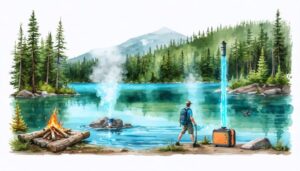

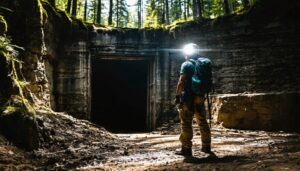
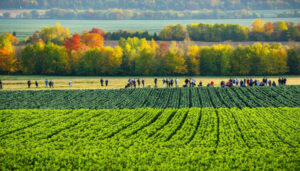

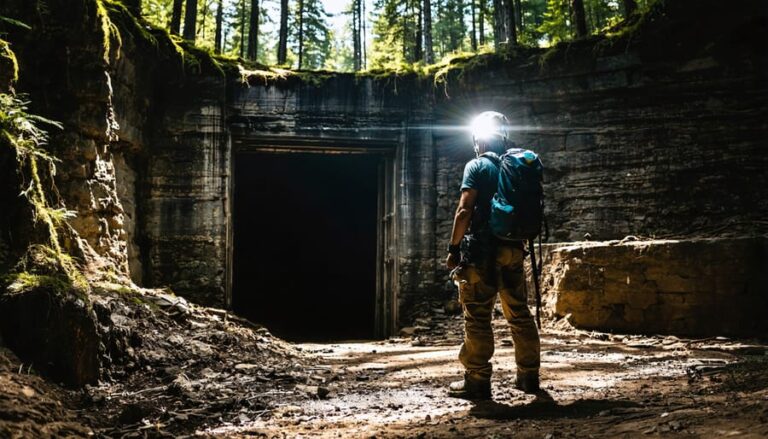
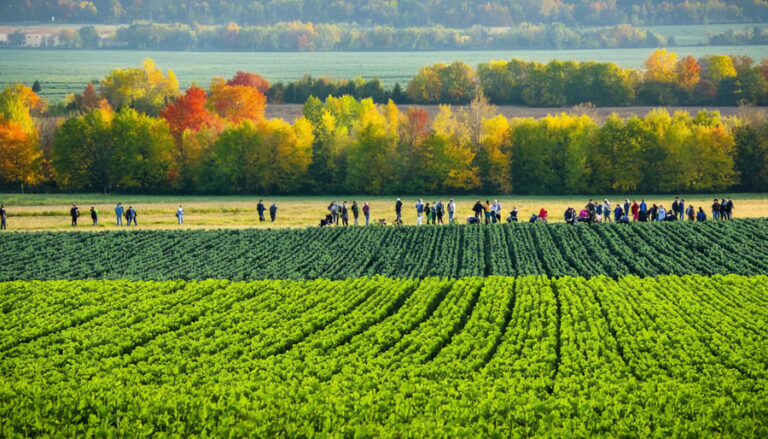




+ There are no comments
Add yours